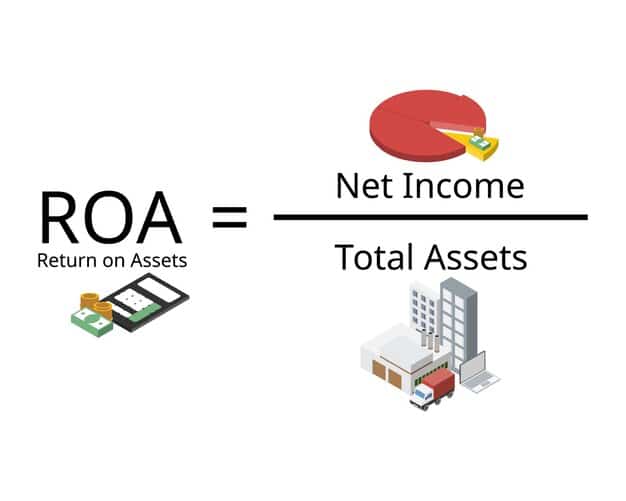Cryptocurrency Tax Guide: Reporting Gains & Losses to the IRS in 2025

Navigating the tax implications of cryptocurrency can be complex; in 2025, understanding how to accurately report your gains and losses to the IRS is crucial for compliance and potentially minimizing your tax liability through strategic planning.
Anúncios
Understanding the tax implications of cryptocurrency: reporting gains and losses to the IRS in 2025 is no longer optional. As digital assets gain wider acceptance, the IRS is intensifying its scrutiny. Are you prepared to navigate the evolving crypto tax landscape and ensure you’re in compliance?
Understanding Cryptocurrency and IRS Tax Guidelines
Cryptocurrency has revolutionized the financial world, but it has also introduced new complexities to the tax system. The IRS treats cryptocurrency as property, meaning that general tax principles applicable to property transactions apply to transactions involving cryptocurrency. This includes activities like buying, selling, and trading cryptocurrencies, as well as using them to pay for goods or services.
What Qualifies as a Taxable Event?
Any transaction involving cryptocurrency that results in a gain or loss is generally a taxable event. This includes selling cryptocurrency for fiat currency (like USD), trading one cryptocurrency for another, using cryptocurrency to purchase goods or services, and even receiving cryptocurrency as income.
- Selling Crypto: Selling Bitcoin or Ethereum for USD triggers a taxable event if you sell it for more than you paid.
- Trading Crypto: Exchanging Bitcoin for another cryptocurrency, like Litecoin, is also a taxable event.
- Using Crypto for Purchases: Using crypto to buy a coffee or a car is taxable, just as if you’d sold the crypto for USD and then made the purchase.
It’s crucial to keep detailed records of all your cryptocurrency transactions, including dates, amounts, and fair market values at the time of the transaction, to accurately calculate your gains and losses. This information is essential for completing IRS tax forms like Form 8949 (Sales and Other Dispositions of Capital Assets) and Schedule D (Capital Gains and Losses).
Determining Your Cost Basis
The cost basis is a critical factor in calculating your taxable gains or losses when dealing with cryptocurrency. It represents your original investment in the cryptocurrency, including the purchase price and any expenses incurred in acquiring it.
Methods for Calculating Cost Basis
There are several accepted methods for calculating cost basis, including First-In, First-Out (FIFO), Last-In, First-Out (LIFO), and Specific Identification. The FIFO method assumes that the first units you purchased are the first ones you sell. The LIFO method assumes the opposite, while the Specific Identification method allows you to choose which specific units you are selling.
Choosing the right method can significantly impact your tax liability. For instance, if you bought Bitcoin at different prices over time and then sold some, using Specific Identification to sell the coins with the highest cost basis could minimize your capital gains tax.
Remember that regardless of the method you choose, consistency is vital. Once you’ve selected a method, you must continue using it for all subsequent sales of that particular cryptocurrency unless you receive permission from the IRS to change it.
Reporting Capital Gains and Losses
Capital gains and losses from cryptocurrency transactions are reported on Schedule D of Form 1040. The holding period of the cryptocurrency determines whether the gain or loss is considered short-term or long-term.
Short-Term vs. Long-Term Capital Gains
If you held the cryptocurrency for more than one year before selling it, the gain or loss is considered long-term. Long-term capital gains are generally taxed at lower rates than short-term capital gains, which apply to assets held for one year or less. Short-term gains are taxed at your ordinary income tax rate.
The tax rates for long-term capital gains vary depending on your income level, but they are typically lower than the rates for short-term gains. This difference in tax rates underscores the importance of understanding the holding period of your cryptocurrency investments.
Carefully tracking the dates you acquired and disposed of your cryptocurrency is essential for correctly classifying your gains and losses as short-term or long-term. This information will impact the amount of tax you owe on your cryptocurrency transactions.
- Holding Period: Track when you bought and sold each unit of cryptocurrency.
- Tax Rate Differences: Understand the difference between short-term and long-term capital gains tax rates.
- Record Keeping: Keep meticulous records of all transactions for accurate reporting.
Understanding Wash Sale Rules and Cryptocurrency
The wash sale rule is a tax regulation that prevents investors from claiming a loss on a sale if they repurchase the same or substantially identical securities within 30 days before or after the sale. While initially designed for stocks and securities, the question of whether it applies to cryptocurrency has been a point of contention. Until recently, the consensus was that cryptocurrencies were not subject to the wash sale rule because they are classified as property rather than securities.
However, recent legislative changes and IRS guidance have introduced uncertainty. In 2025, the IRS might clarify or extend the wash sale rule to include cryptocurrency transactions. This would mean that if you sell cryptocurrency at a loss and repurchase it (or another substantially identical cryptocurrency) within 30 days, you won’t be able to claim the loss on your taxes.
Given this evolving landscape, it’s prudent to monitor IRS updates and consult with a tax professional to understand how the wash sale rule may impact your cryptocurrency tax strategy in 2025. Planning and awareness are key to navigating these changes successfully.
Strategies for Minimizing Cryptocurrency Taxes
While taxes are inevitable, implementing strategic planning can potentially minimize your cryptocurrency tax liability. This often involves understanding various tax-advantaged options and making informed decisions about your cryptocurrency investments.
Tax-Advantaged Accounts
Investing in cryptocurrency through tax-advantaged accounts, such as a self-directed IRA or 401(k), can offer significant tax benefits. Contributions to traditional IRAs and 401(k)s may be tax-deductible, reducing your current tax liability. While withdrawals in retirement are taxed, the gains within the account grow tax-deferred.
Roth IRAs and 401(k)s offer a different advantage: contributions are made with after-tax dollars, but qualified withdrawals in retirement are tax-free. This can be particularly beneficial if you anticipate being in a higher tax bracket in retirement.
Carefully consider your current and future tax situation when deciding whether to invest in cryptocurrency through a tax-advantaged account. Consult with a financial advisor to determine the best approach for your individual needs and goals.
Tax-Loss Harvesting
Tax-loss harvesting involves selling cryptocurrency at a loss to offset capital gains. This strategy can reduce your overall tax liability, particularly if you have significant capital gains from other investments.
If your capital losses exceed your capital gains, you can deduct up to $3,000 of the excess loss from your ordinary income each year. Any remaining loss can be carried forward to future years.
Investing in qualified opportunity zones can offer tax advantages by deferring or eliminating capital gains taxes. To take advantage of this, capital must be invested in a qualified opportunity fund (QOF) within 180 days of the sale that generated the capital gain.
IRS Resources and Cryptocurrency Tax Compliance for 2025
Staying compliant with IRS regulations regarding cryptocurrency taxation is crucial to avoid penalties and legal issues. The IRS provides resources and guidance to help taxpayers navigate the complexities of cryptocurrency reporting.
IRS Guidance and Publications
The IRS has issued several notices and publications addressing the tax treatment of cryptocurrency. These resources provide valuable information on topics such as cost basis, capital gains and losses, and reporting requirements.
It’s essential to stay up-to-date on the latest IRS guidance, as the agency’s position on cryptocurrency taxation may evolve over time. Regularly check the IRS website for new announcements and publications.
Consulting the IRS website and official publications is highly recommended for anyone dealing with cryptocurrency, to ensure compliance with current tax laws and regulations. A proactive approach to tax compliance can help avoid potential issues and penalties.
- IRS Website: Regularly check for updates and announcements.
- Official Publications: Consult IRS guidance on cryptocurrency taxation.
- Professional Advice: Seek guidance from a qualified tax professional.
| Key Point | Brief Description |
|---|---|
| 🔑 Cost Basis | Original crypto investment, impacting taxable gains. |
| 📈 Capital Gains | Profits from selling crypto, taxed at different rates. |
| 🚫 Wash Sale Rule | May disallow loss if crypto repurchased shortly after sale. |
| 💼 Tax Strategies | Minimize taxes with loss harvesting or tax-advantaged accounts. |
Frequently Asked Questions (FAQ)
▼
The IRS treats cryptocurrency as property. This means it’s subject to capital gains taxes when sold at a profit. It also means that using crypto to buy goods or services is a taxable event.
▼
Cost basis is the original price you paid for the cryptocurrency. This is important as it’s used to calculate your capital gain or loss when you sell or trade the crypto, impacting the amount you owe in taxes.
▼
You’ll report capital gains and losses from crypto on Schedule D of Form 1040. Use Form 8949 to detail each transaction, including the date acquired, date sold, proceeds, and cost basis.
▼
Short-term capital gains apply to assets held for a year or less and are taxed at your ordinary income tax rate. Long-term gains apply to assets held over a year and are taxed at lower, preferential rates.
▼
Consult the IRS website for official guidance and publications on digital assets. You can also seek advice from a qualified tax professional who specializes in cryptocurrency taxation for personalized assistance.
Conclusion
Navigating the tax implications of cryptocurrency can be complex, but with a solid understanding of IRS guidelines, cost basis calculations, and strategic tax planning, you can ensure compliance and potentially minimize your tax liability in 2025. Remember to keep meticulous records, stay informed about regulatory changes, and seek professional advice when needed.







